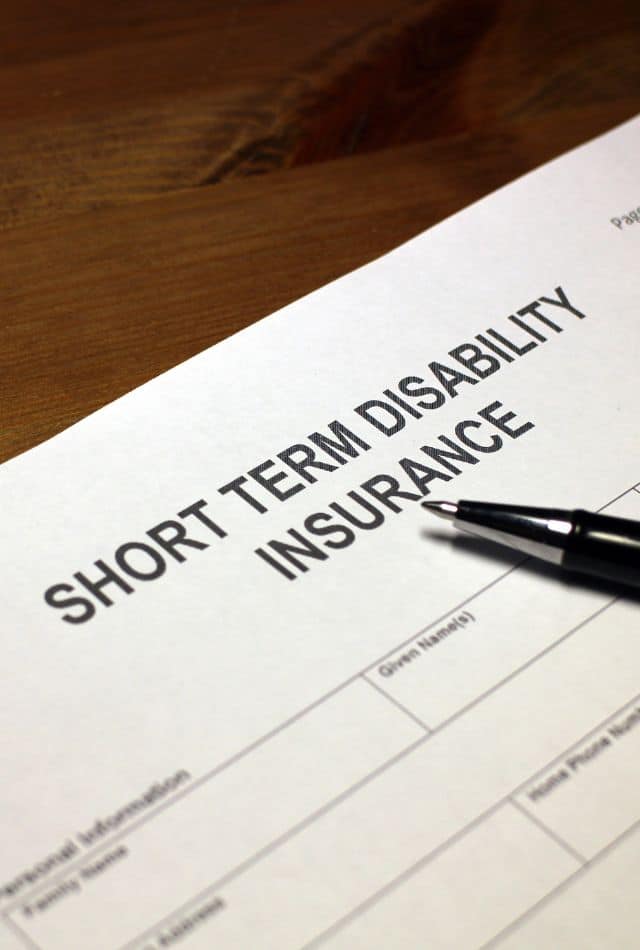What is Short Term Disability – Overview
Short term disability pays you a part of your pre-disability salary. This is provided when non-job-related illnesses, injuries, and medical issues prevent you from working for a short time.
Remember, injuries sustained while you are working are typically covered under workers’ compensation and not through short-term disability.
Numerous employers in the US choose to provide short-term disability insurance coverage as part of their employment benefit package.
However, as of my last update in April 2023, five states (New York, Rhode Island, Hawaii, California, and New Jersey) plus Puerto Rico are required by law to provide short-term disability benefits to employees.
How Long Do Short Term Disability Benefits Last?
The specific duration of short-term disability insurance depends on the specific plan. For instance, coverage can last from a few days to several months and even a year. Besides this, the coverage also depends on your specific disability.
Recovery time predictions by medical experts can guide plan providers in determining a reasonable duration for benefit coverage, although actual recovery times may vary.
Short-term disability benefits are meant to cover illnesses or injuries for a short period, usually less than a year. However, the specific duration defined for short-term disability benefits will depend mainly on the type of insurance plan you have. You may qualify for long-term disability benefits if it takes longer to recover.
What Qualifies You for Short Term Disability?
No single standard definition for any disability can cover the entire spectrum. Every short term disability benefit depends on the insurance plan or policy.
Generally, it considers any illness or injury that prevents a gainful employee from working for a specific period of time.
This could include major surgeries that require significant time for recovery, an injury sustained in an accident or a chronic illness that needs frequent treatment.
Besides physical injuries, short-term disability benefits are also offered for mental issues, such as depression or any other issue that makes it difficult or impossible for you to normally complete the tasks at work.
Short-term disability benefits may cover mental health leave, but coverage varies according to specific plans or policies. Make sure to consult your mental healthcare provider for support and documentation.
In addition, some insurance plans also consider maternity leave for short term disability benefits. As a result, many insurance buyers use short-term insurance for maternity benefits.
The duration of maternity coverage under short-term disability may vary by plan and does not typically depend on the type of childbirth (C-section or vaginal delivery). Still, some insurance providers may exclude maternity leaves from short term disability plans but may offer a different plan to address this need.
Suppose you don’t qualify for maternity leave under short-term disability benefits. In that case, you may still be eligible for unpaid leave under the FMLA (Family and Medical Leave Act), depending on your and your employer’s eligibility.
Who Pays for Short Term Disability

Employers may offer short-term disability benefits through a self-funded/self-administered plan, where the employer funds the benefits directly, or through an employer-sponsored insurance plan.
Some employers even combine these two models, where the employer funds the part of your paycheck that the insurance policy does not cover for a limited period.
How Much is Paid Through Short Term Disability?
Short term disability benefits cover your time off work, but this does not necessarily mean you will receive your full paycheck. Some insurance plans may offer up to 100% salary replacement, but most commonly cover between 50% to 70% of your salary.
Regardless, the insurance provider offers a percentage (between 50% and 60% of your weekly earnings) with a dollar cap.
Insurance plans also provide different amounts based on your tenure with the employer. For instance, if you have worked for an employer for 10 years and have a 26-week disability period, then you may receive 100% benefits for up to 3 months, which is then reduced to 50% from the 4th month onward.
However, you need to be aware that if your employer insurance offers short term disability benefits, then payments will be administered by the insurance provider. This means that you may receive the amount in a different form and schedule than normal.
In contrast, if your employer does not offer short term disability benefits, you can easily purchase them privately. Purchasing short-term disability insurance privately often costs more than participating in an employer-sponsored plan. The specific cost for this will usually depend on your age and the level of benefits you qualify for.
Conclusion
To apply for a short term disability benefit, you will first need to ensure that your illness or injury is well-documented. Consult with your doctor and find out the facts for your case.
Find the elimination period from your insurance provider, and finally, approach the HR department to file an initial claim.
See Also
Small Business Hardship Grants
Emergency Grants for Individuals
Home Repair Grants for Disabled